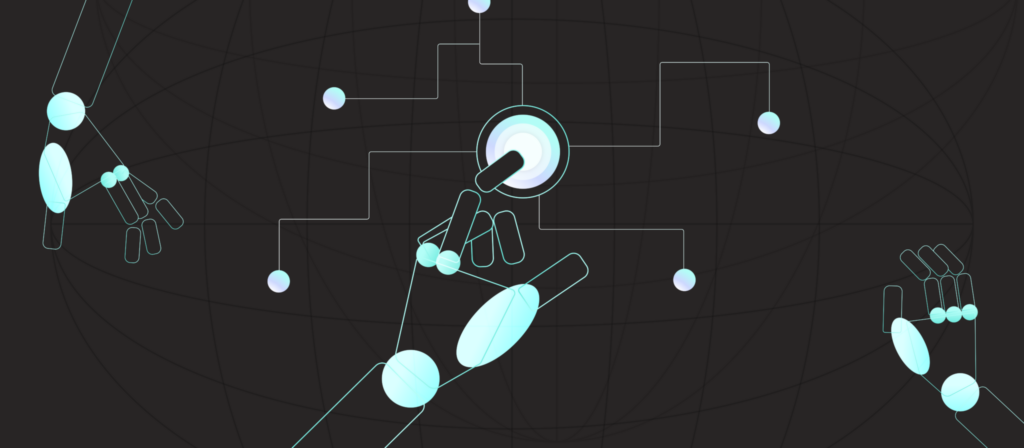GenAI and Agents Don’t Scale On Their Own
The hype around GenAI and autonomous agents is everywhere. Enterprises are running pilots across departments, from copilots for sales to chatbots for IT support to agents designed to take actions on behalf of employees. But despite the excitement, most of these initiatives stall before they scale.
The model works. The agent has potential. But it cannot go anywhere meaningful on its own.
We see this across industries:
- The agent can reason, but it cannot act.
- It can act, but only inside one app.
- It works in isolation, but not across systems.
- It runs in a demo, but not in production.
At Workato, we know the reason: GenAI and agents are only as powerful as the environment they run in. They need more than access to a model. They need access to real-time data, governed workflows, human decision points, and the ability to trigger actions across multiple applications.
They need orchestration.
This is not a limitation of AI—it’s a limitation of infrastructure. Without orchestration, AI becomes another disconnected tool. With it, agents become trusted teammates that help move business forward.
Why the Demo Is Not the Destination
Building an AI demo is easy. Getting it to work across teams, systems, and live data is not.
Many organizations launch GenAI initiatives with quick wins in mind. They start with chatbots, simple copilots, or isolated assistants. These use cases can be useful, but they rarely connect to the systems that run the business. The moment the agent needs to act, update a record, trigger a workflow, or request approval, it hits a wall.
That wall is made of missing context, disconnected systems, and lack of trust.
What is missing is not the model. It’s the foundation and infrastructure around the model.
A Strategy for Real Enterprise AI
To make GenAI and agents truly operational, enterprises need to treat AI as a system-level capability, not a standalone tool. That means building an AI strategy that includes:
- Real-time, governed data access
Agents need structured, secure access to data across systems. Without this, outputs lack relevance or accuracy. - Process orchestration
Agents must be able to take actions that span multiple systems. This includes conditional logic, human-in-the-loop decisions, and coordination across workflows. - Defined roles and escalation paths
Not every task can or should be automated. Agents need boundaries and escalation rules to ensure safety and accountability. - Continuous improvement and lifecycle management
Agents evolve. Enterprises need systems for testing, monitoring, and refining them over time.
Without these elements, GenAI will remain stuck in pilot mode.
From Framework to Execution: GEARS in Action
At Workato, we developed the GEARS framework to help organizations operationalize GenAI and agents in a structured, scalable way. GEARS stands for Govern, Enable, Adopt, Run, and Scale. It is a blueprint for how enterprises can move from experiments to real outcomes. Here’s how to start:
Ideation
Even experienced teams often struggle to identify where agents can add value. Structured ideation sessions help teams write agent job descriptions, brainstorm use cases, and reimagine processes with agents in mind.
Delivery
Success requires more than a builder. It requires hybrid teams with subject matter experts, agent developers, and program oversight. These teams work within managed environments where they can experiment safely, learn quickly, and deliver outcomes.
Security and Governance
Agents interact with core systems and sensitive data. That requires role-based access control, encryption, audit logs, and strict boundaries. It also requires controls to prevent unauthorized changes or misuse.
Testing
Agents do not produce the same result every time. That means traditional testing does not apply. Enterprises must use scenario simulations, output scoring, human review, and red-teaming to validate performance.
Why Orchestration Is the Foundation
The ability for an agent to reason or generate text is not enough. It needs to know what to do next, who to notify, what systems to update, and when to stop.
That is what orchestration provides.
Orchestration connects agents to systems. It gives them access to actions and data. It wraps them in guardrails. It lets them work with people and processes. And it ensures that everything is logged, observable, and governed.
Without orchestration, agents are isolated. With orchestration, they become intelligent teammates embedded in the flow of work.
This is not about adding another layer of complexity. It is about giving AI a reliable foundation to stand on.
Conclusion: If You Want AI That Works, You Need the System That Supports It
AI on its own is not enough. Agents, no matter how advanced, cannot scale in isolation.
What separates a pilot from a platform is not the model. It is the system around it.
So why do most AI and agentic efforts fail?
- They lack access to real-time, governed data
- They are disconnected from the business systems where work actually happens
- They operate without structure, oversight, or clear escalation paths
- They are built without a plan for how to evolve, improve, or operate safely in production
This is why orchestration matters. It is the layer that connects AI to your systems, aligns it to your business goals, and wraps it in the guardrails required for enterprise execution.
And this is exactly what the GEARS framework provides: a step-by-step model for moving from isolated use cases to intelligent agents that operate reliably, securely, and at scale.
If your AI strategy stops at the demo, you don’t have a strategy. If your agents cannot act, they are not agents, they are expensive prototypes.
If you want AI that works across your business, you need more than a model.
You need structure. You need governance. You need orchestration.
That is what Workato was built to deliver.

